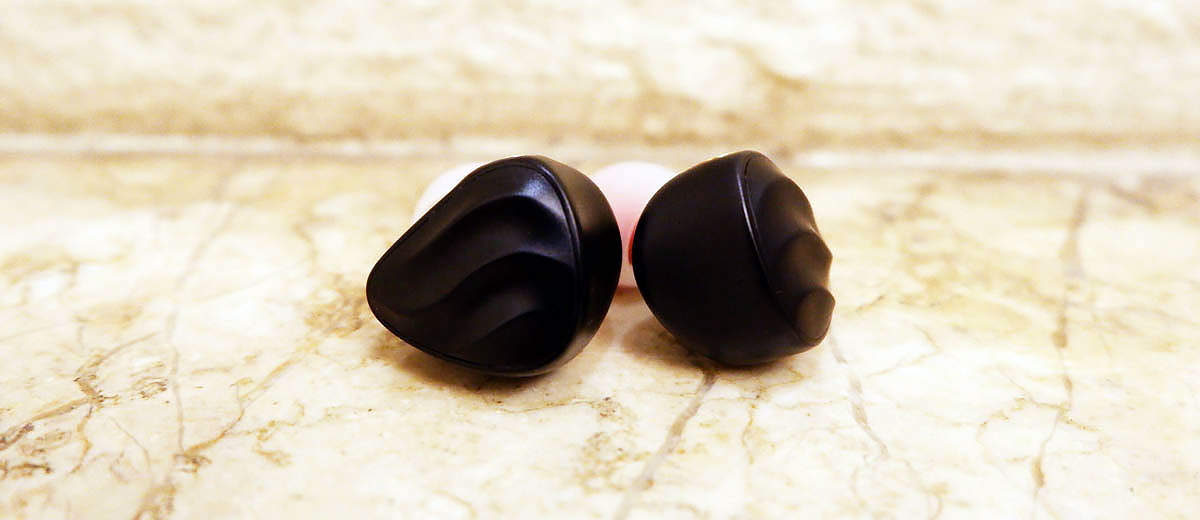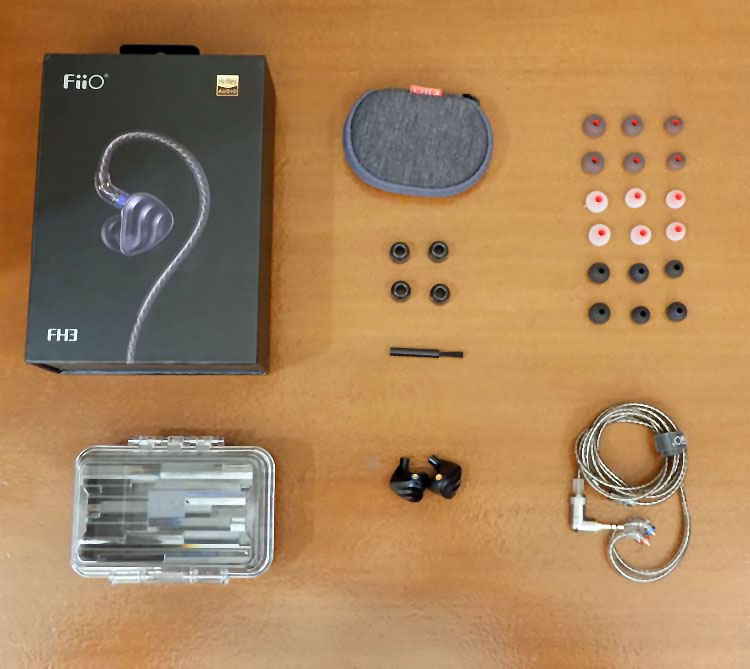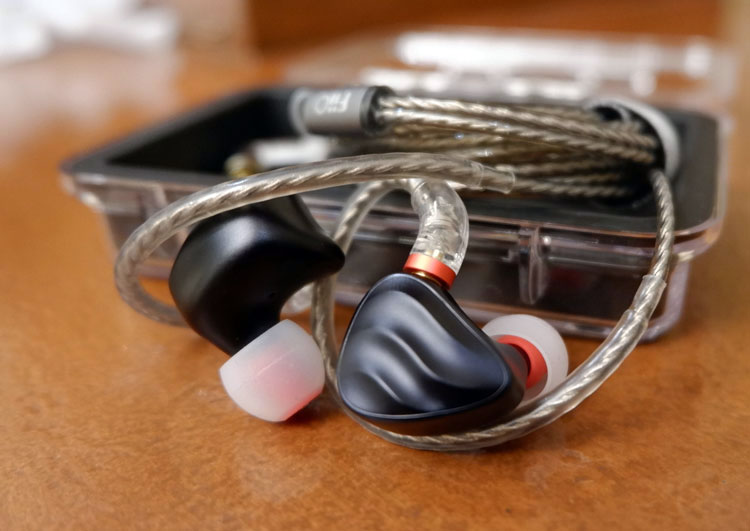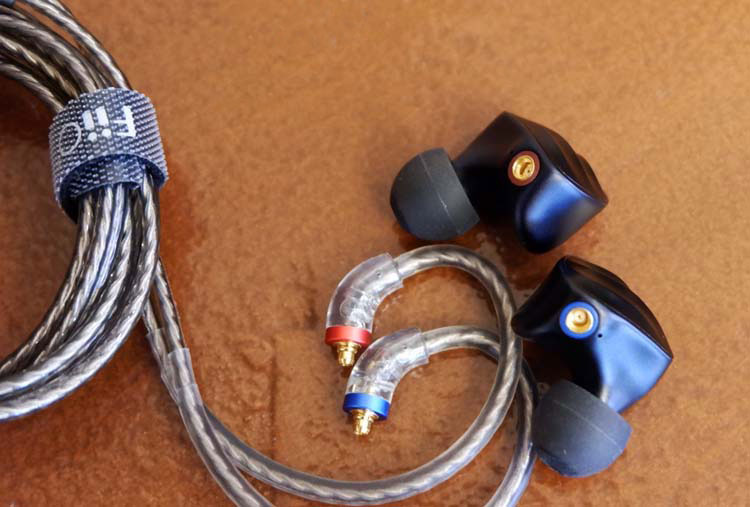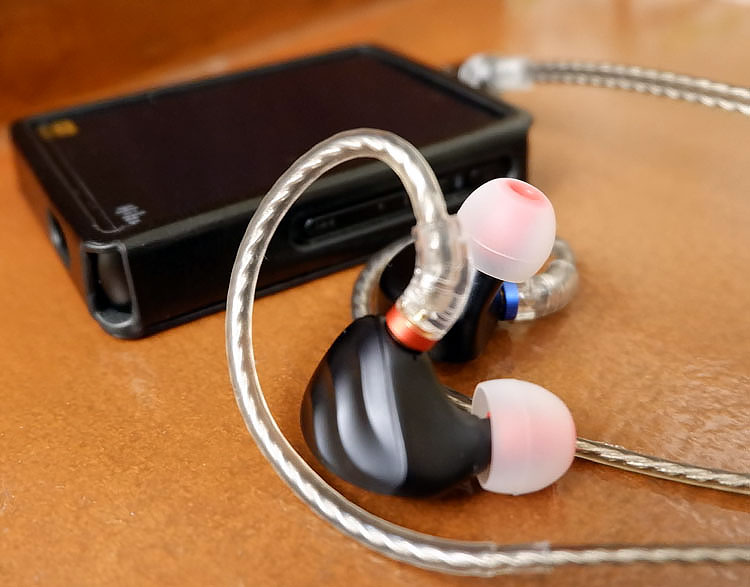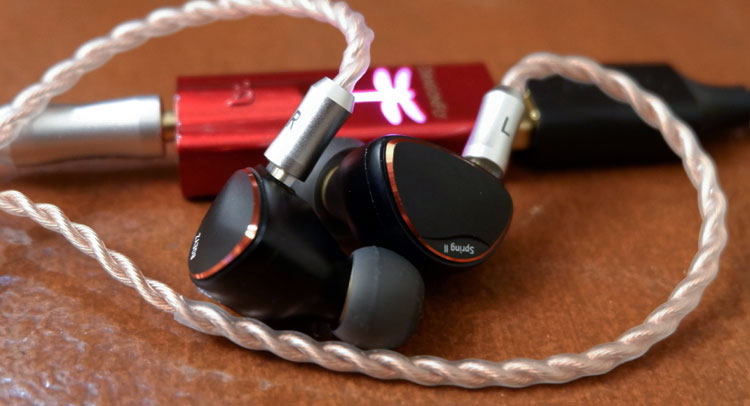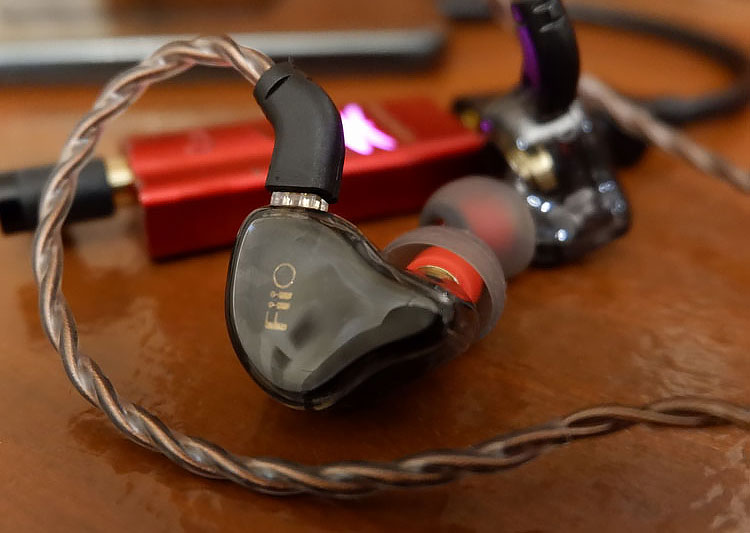The FiiO FH3 is a triple driver hybrid universal IEM featuring a single beryllium coated dynamic driver and 2 balanced armature drivers. It is priced at $129.99.
Disclaimer: The FiiO FH3 sent to us is a sample in exchange for our honest opinion. We thank FiiO for this opportunity.
To learn more about FiiO reviews on Headfonics you can click here.
Note, this review follows our new scoring guidelines for 2020 which you can read up on here.
It seems like FiiO has been churning out products almost every month, not that I’m complaining. Recently, they released their flagship balanced armature IEM the FA9, then the overachieving entry-level IEM, FD1, and now they have come to us with their latest launch the FH3.
I was surprised at the performance of the FD1 and given the FH3 is meant to be the successor to the F9 Pro IEM, which also had a similar driver configuration and price point so I am hoping for the same outcome.
Technology inside
At first glance, the FH3 looks similar to the rest of FiiO’s FH series of hybrid IEMs, but the configuration is watered-down a little from the higher-end FH5 and FH7.
The FH3 uses a triple driver design with a 3-way configuration using a single DD for the lows, a single BA for the mids and a single BA for the highs.
Beryllium-Coated Dynamic Driver
The lows are handled by a 10mm beryllium-coated dynamic driver, similar to what is being used in their FD1 and an upgrade on their original PEK 9.2mm F9 Pro dynamic driver.
However, the dynamic driver in the FH3 is focused purely on the lows rather than the entire range. Beryllium coated cones are chosen for its rigidity and lightness, (lighter than their previous PEK design), and should enable the driver to produce a powerful but controlled bass response.
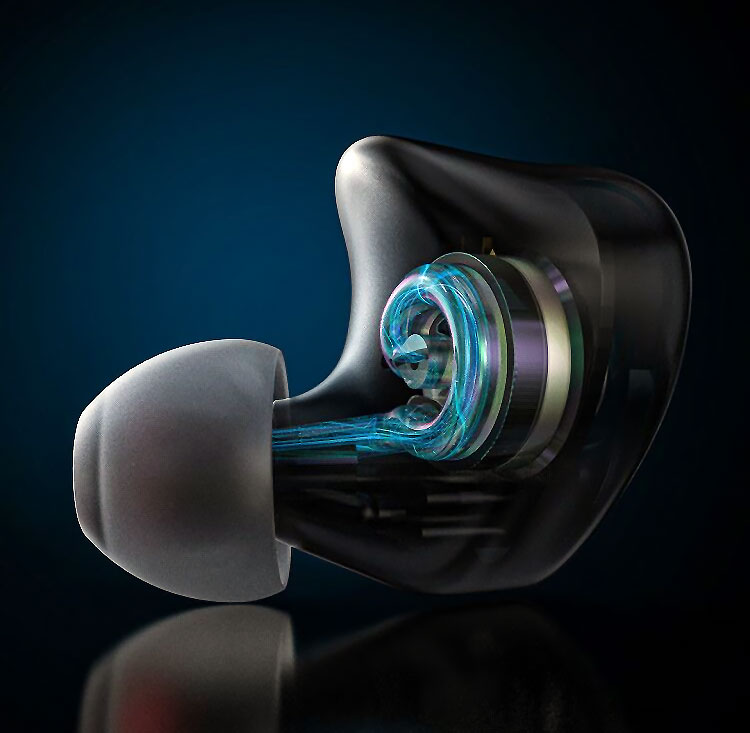
S.Turbo
To supplement this driver, the FH3 also features FiiO’s patented S. Turbo acoustic design technology. This technology filters out unwanted high-frequency harmonics that may be inadvertently produced by the dynamic driver. This should then give the FH3 a smoother bass response that doesn’t interfere with the other frequencies.
Balanced Armature
The FH3 uses 2 balanced armature drivers for the mids and highs. Interestingly, FiiO has decided to place the higher frequency BA driver closer to the ears, to reduce treble reflections through the sound tube. This should enable the FH3 to create a cleaner and more articulate treble.
With a 3-way configuration, the strength should be the ability to clearly present more detail at each frequency range, as each driver is optimally tuned to produce only a narrow band of frequencies.
However, the challenge will always be the ability to create a coherent sound by properly integrating the drivers. I am looking to see if the FH3 is able to overcome these challenges.
Packaging & Accessories
The FH3 came in a box that’s typical of FiiO’s current IEM line. The box itself is quite nicely made, with few markings aside from a picture of the IEM and FiiO’s company address. Overall, the box is durable offering enough protection for shipping.
Inside the box, you FiiO’s information leaflet at the top and then the IEM itself, nicely arranged in foam inserts to prevent movement during shipping.
The other half of the box contains a clear hard plastic case with a small pouch inside that contains a healthy selection of ear tips and a nozzle cleaning tool. You can use either the durable hard case or the softer pouch for transport depending on size constraints.
The FH3 accessories are rounded-out with 4 different types of single bore silicone ear tips in small, medium, and large bore with some additional foam ear tips.
Design & Comfort
If you have seen the FH5 and FH7 then the FH3 follows a similar design pattern. The FH3 shells are made of an aluminum-magnesium alloy but still retain a fairly lightweight feel. They are also corrosion-resistant and incredibly durable compared to acrylic materials.
The shells have gone through a 5-axis CNC milling process to give it an ergonomic shape, then finally finished with a zircon sand 260 sandblasting for a smooth finish.
It was also a nice touch that FiiO has added blue and red color markings on the shells as well as the IEM cable similar to the FH5 and FH7. This makes it much easier to identify the L/R channel orientation for cable connecting.
The stems of the IEM shells are not too short, so the fit is secure and relatively comfortable. It is heartening that FiiO has retained the same design and fitting philosophy that was initially seen on the higher-end models, it keeps the hybrid line very consistent in their design approach.
Ear Tips & Isolation
Of the various tips available I found myself going back to the stock ear tips that are attached to the FH3 out of the box. They sounded optimal for my personal preferences. The medium and large bore tips progressively increased the bass quantity of the FH3, while at the same time diminishing the bass detail and texture.
Personally, I don’t prefer foam tips, and in this case, I didn’t like them either with the FH3. While they give me a more detailed sound, they tend to close the sound stage in quite a bit.
I am satisfied with the way the stock small-bore tips created an acceptable level of isolation while giving the FH3 the optimal sound signature for my taste.
Stock Cable
The cable that comes with the FH3 is a silver-plated monocrystalline copper cable coated with a thin rubber sheath jacket. This jacket does make the cable much more manageable and resistant to tangles.
The cable terminations are also good quality with a 90° metal 3.5mm jack using a small spacer to make sure the connector will fit your DAP even when it is inside a case.
The cable also uses angle MMCX connections. I tend to prefer the MMCX connection over the 0.78mm2-pin connection since MMCX can be more robust. It also removes the possibility of pins being bent or left inside the IEM.
This slight angle creates a more secure fit for the ear loops making it much easier to wear without worrying about them coming off the ears.
Sonically, the cable seems to be transparent, with the silver plating on the monocrystalline copper gives it an overall lower level of resistance. That means that the cable will be able to reduce the amount of loss of information on the higher frequencies and delivering a bit more energy on the treble. This particular cable is no slouch, especially considering the price point of the FH3.
Sound Impressions
Bass
One of the things that I noticed with the FH3 is the quantity of the bass. It has a quite a lot of bass, maybe due to the S. turbo bass and the singular focus of the large beryllium coated drivers on the lows. With the FH3, I can almost feel the bass rumble around me, the bass on the FH3 simply sounds big despite imaging fairly centrally.
The quality and detail on the low-end are still good. I can hear the difference in the timbre of each instrument quite well. Differentiating each drum or bass guitar is not that hard with the FH3.
I kept trying to listen for that crescendo of each bass hit, but it does not quite hit as hard as I would like it to. At first, I couldn’t quite put my finger on why this happens, but I think that the FH3 has a slightly compressed bass quality to it. It does improve with better sources though.
Midrange
The one downfall of the hybrid drivers is the clash of timbre from the dynamic and drivers, especially when transitioning from one to the other. That normally hits the mids harder if not done well. Fortunately, FiiO was able to avoid this potential problem with their BA tuning inside the FH3.
On the FH3, the midrange simply came to life, and it made me worry less about how the IEM sounds with an easier focus on the detail and texture within instruments and vocals. The midrange is has a better level of textured and detail than I expected. Emphasized, with some contrast but not overpowering or shouty sounding.
Treble
The treble has an airy quality but not overly sharp or aggressive. I like how the FH3 is able to present details while not shoving it into my ears in a strident manner. Whatever song is thrown at them, even ones that are heavy on percussion, the FH3 is able to deliver a fairly balanced tone shy of splashiness and grating sibilance.
Soundstage & Imaging
Staging on the FH3 is quite respectable, but not stellar. I can hear sounds being played at approximately ½” away from my head, which is quite good for a pair of IEMs. The soundstage, however, just ends there and it sometimes sounds like there is a wall at the bounds rather than effortless space or width.
What impressed me with the FH3 though is the ability to create some accurate imaging within that space. Instrumental separation and clarity from the BA drivers are impressive with some decent height and depth to prevent the air from being sucked out.
Synergy
The FH3 is rated at 24Ω and 114dB @ 1mW SPL so it is relatively easy for current, even from a decent smartphone. I tried it with a Nokia 7.2, and it was able to push the FH3 to decent volume levels.
This is not to say that the FH3’s would sound anywhere near its full potential when driven off a phone. the FH3 is revealing enough to highlight the weaknesses of the Nokia and I did get a more vague level of imaging and an even more closed-in soundstage.
With a Hiby R3 Pro, the performance greatly improved. I was able to pick out a lot more detail and the soundstage delivered an improved expansive quality.
The dynamic range was also dramatically improved. You can hear that easily on the R3 Pro with a blacker background and a more impactful low-end from that dynamic driver. To use the FH3’s to its full potential, a good source is a must.
Select Comparisons
BQEYZ Spring 2
$169
The Spring 2 is priced slightly higher at $169. Both IEM’s have a triple driver setup but there are some differences. The Spring 2 has a Piezoelectric driver for the highs whilst the FH3 has that single BA for the treble.
The BQEYZ packaging and accessories are fair for the price whereas the FH3 lineup is more generous. The Spring 2 just came with a hardshell case with silk-screened branding whereas the FH3 included a clear hardshell case as well as a soft pouch.
The cables on the 2 IEM’s are also quite different. The FH3 SPC cable with MMCX combo is more convenient and supple compared to the Spring 2’s 0.78mm connector. The Spring 2 also has much softer pure copper cables but the braiding felt a lot looser than the FH3 cable finish.
In terms of tuning, you can pick up easily on where these two monitors differ. Both have about the same soundstage width, however, the FH3’s tighter imaging has an edge over the Spring 2 which is a little more to the vague side.
The treble on the Spring 2 has a lot more presence compared to the FH3 which didn’t surprise me given the use of the piezoelectric drivers in its configuration. It does create a perception of better resolution. However, the FH3 sounds a little bit more coherent and wetter in its treble tuning when compared to the Spring 2 so it is the mroe forgiving sounding of the two.
FiiO FD1
$59.99
Comparing the FH3 to its overachieving entry-level sibling the FD1, the FH3’s are a step up in more ways than one.
FiiO became a bit more generous on the Fh3 packaging with a wider selection of ear tips which for some will offer more flexibility for fine-tuning the sound.
The shells of the Fh3 are made of an aluminum-magnesium alloy compared to the plastic shells on the FD1 so a bit more robust. Although both share the same ergonomic sensibilities, the FH3’s cable tends to tangle a bit less. Also, the MMCX connection on the FH3 seems quite a bit more durable.
In terms of tuning the additional dual BA driver configuration fo, the mids and highs deliver a more detailed presentation. The frequency response does not roll off as early at the extremes compared to the FD1. While the soundstage might be a bit more out of your head on the FD1, the imaging on the FH3 is tighter and more accurate for me.
Our Verdict
The FH3 continues what we here tend to think of as the superior line of monitors from FiiO, the hybrid monitor line. Like the FH5 and FH7, the design and familiar form factor of the FH3 with the CNC Magnesium-Aluminum alloy finish makes it a durable but lightweight and very comfortable IEM.
The thoughtful detail such as the standoff on the 3.5mm termination and the red and blue color coding on the cables and shells are a welcome addition. The overall package and accessories that came with the FH3 actually offer great value with the range of tips and carry cases. Cases that often come in FiiO’s higher-level IEM packages.
If I had to nitpick on what I didn’t quite like with the FH3 tuning is that it presents a slightly compressed bass and a narrower staging element for my personal preferences. Despite that, the overall tonal balance is very good. The imaging is a strong point with a relatively coherent sound signature for a hybrid monitor.
FiiO FH3 Specifications
- Earphone material: aluminum alloy
- Number of drivers: 3 drivers, 1 DD, 2BA
- Plug termination: 3.5mm
- Plug type: L-Bend
- Impedance: 24 Ω @ 1kHz
- Sensitivity: 114dB / MW
- Frequency response range: 10-40000 Hz




